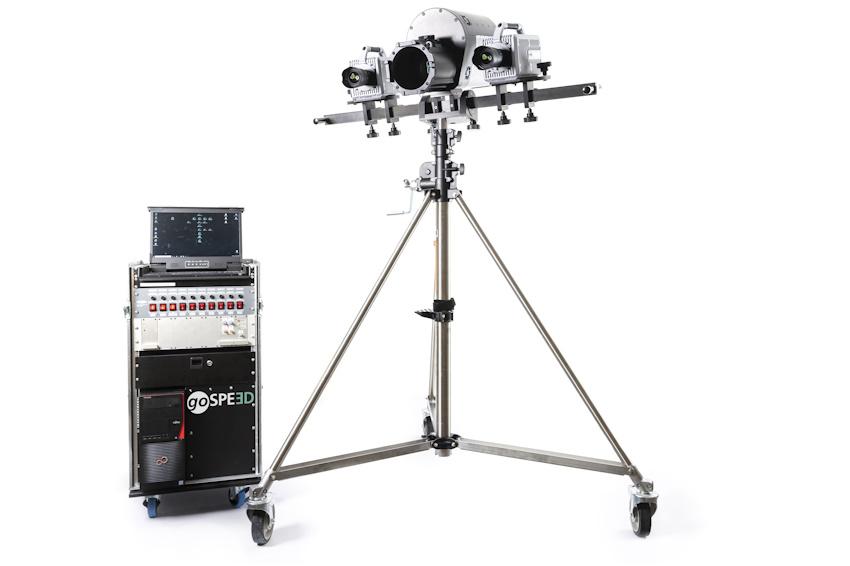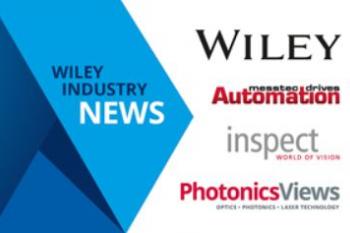Gobo technology improves 3D metrology
11.02.2025 - Ultra-fast and -robust 3D sensing
Researchers are using the principle of Gobo projection to set new standards in 3D metrology. Their technology surpasses previous systems in speed, accuracy, and robustness. It improves processes in various industries, including automotive, safety, shipbuilding, and aviation. In a joint project, advanced measurement systems were developed for use in safety tests.
Whether it’s monitoring industrial manufacturing processes, capturing people or vehicles, or in medical or sports applications: acquiring 3D data continues to grow in importance. The more dynamic a situation is, i.e., the faster an object or person moves during the measurement process, the tougher the demands on the measurement method. Conventional techniques quickly reach their limits: in vehicle crash tests, e.g., objects must be marked in advance using special signs. However, this is not possible for all objects.
For more than ten years, researchers at Fraunhofer IOF have been working with Volkswagen to overcome this challenge. They have developed a special measurement system for high-speed 3D data acquisition without prior preparation of the object. Their sensor essentially consists of two high-speed cameras and a pattern projector. Because only high-performance cameras are commercially available, the researchers in Jena, Germany, have developed a novel high-speed projection method: the so-called Gobo projection of aperiodic sinusoidal patterns.
How Gobo technology works
Gobo stands for “GOes Before Optics” and refers to the mask in a kind of slide projector. The Fraunhofer researchers have advanced this special technique, which originates from stagecraft. In their Gobo projector, a disk with an irregular fringe pattern rotates in front of a powerful light source. This generates a time-varying, non-periodic sine pattern that is projected onto the object to be measured. At the same time, two high-speed cameras observe the scene from different angles. The pattern sequence allows the pixels in the images from the two cameras to be clearly assigned, which can then be used to calculate the 3D coordinates of the object points.
Gobo technology at work: the systems Gocrash3D and Gospe3D
In cooperation with Volkswagen, Fraunhofer IOF has created two measurement systems that use Gobo technology: Gospe3D and Gocrash3D. The goal of the Gospe3D system, developed in 2016, was to temporarily track the deployment of an unmodified airbag from series production. At full resolution, the system generates up to 1,200 independent 3D data sets per second, each with one million 3D points. The speed can be further increased by using partially overlapping image stacks and a reduced resolution, which has made it possible to measure up to 50,000 3D images per second. Such high-speed measurements allow for capturing even the fastest movements in three dimensions and in detail. This enables the user to detect optimization points in airbag development at an early stage on the component test stands and to optimize the simulation forecasts of the tests in a systematic way. Due to the flexibility of the projection principle, Gospe3D can be adapted to a wide range of measurement tasks. In addition to various airbag tests, it has already been used by Volkswagen for, e.g., pedestrian protection tests.
The tests carried out with the Gospe3D were conducted on separate test stands outside the vehicle. A few years ago, the researchers began developing a 3D sensor that can actively ride along in a crash test, survive the crash without damage, and three-dimensionally measure movements or deformations in the vehicle interior. Their efforts resulted in Gocrash3D, an ultra-robust 3D projection system that can measure accurately even at accelerations of up to 60g and generates up to 1,200 3D images per second, each with up to 250,000 3D points. With a measuring field of up to 0.7 × 0.7 m², the new sensor allows for capturing areas in the vehicle interior, such as the footwell, whose movements or deformations could, thus far, not be measured or monitored without specially applied markers. Gocrash3D was first used in 2023 by Volkswagen. As it can be seamlessly and easily integrated into the test setups, Gocrash3D offers new possibilities for safety analyses. For other applications, the system can be customized to the measurement task. For example, Volkswagen plans to combine several systems to fully capture objects from all sides and further optimize simulation forecasts. Yet the potential of the novel technology ranges from industrial manufacturing and production to quality assurance in toolmaking or mechanical engineering, as well as in medicine and forensics.
Contact
Fraunhofer Institute for Applied Optics and Precision Engineering IOF
Albert-Einstein-Str. 7
07745 Jena
Germany
+49 3641 807-0
+49 3641 807-600









